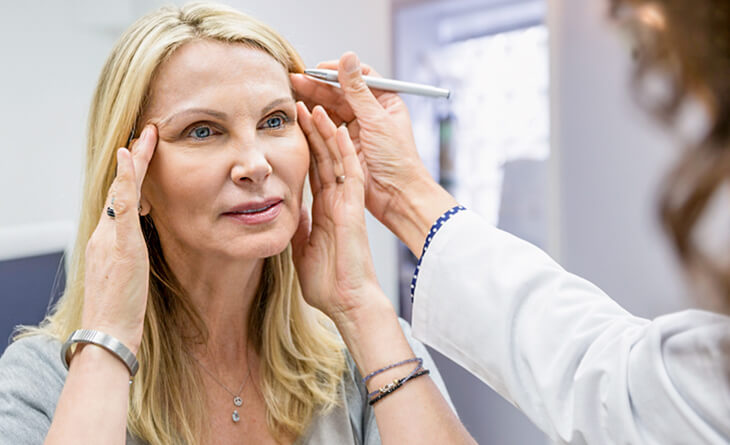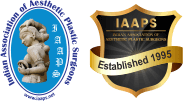The increase in demand for non-surgical procedures has led to the evolution of many ‘lunch hour’ procedures in aesthetic surgery/dermatology. Patients are more keen for less invasive, less painful and economical procedures with short recovery times.
Till the last 15-20 years, the only way to address a patient’s complaints of facial skin laxity and tissue descent- such as the development of jowls & exaggerated nasolabial folds – was facelift surgery. Face-lift surgery is still the gold standard procedure for facial ageing. It’s the only procedure with definitive, predictable, and long lasting results in patients complaining of an aging face. However it is a major invasive procedure, has long noticeable scars, a significant downtime for recovery and can have some complications.The thread-lift was devised as a solution to this problem of long down time, to minimise the scar and reduce the invasiveness of the procedure, but at the cost of reduced longevity.

Who are suitable candidates?
Non-surgical thread-lift is best suited for patients with early laxity of skin in the 30-50 years age group. They are primarily used to correct the nasolabial folds, mid-facial descent, jowls and neck. Apart from the lifting effect, the threads also combat aging by stimulating the production of collagen around the threads. This neo-collagen helps to rejuvenate the skin by improving the texture & thickness of the skin.
The Procedure
The procedure was first devised by Dr. Marlen Suleimanidze of Georgia in the mid to late 1990s using barbed threads. It was further popularised by Dr. Woffles Wu of Singapore in early 2000s. Dr. Gregory Ruff of Durham devised the concept of fixing these threads and Dr. Nicanor Isse of New York introduced coned threads a few years ago.
At the start of the session, a numbing cream is applied for 30 mins. The procedure itself usually takes 30 minutes to 1 hour, depending on the area being treated. A thread lift is performed through a small cut or puncture in the temple area (above the ear inside the hair line) under local anaesthesia. From this point, barbed/coned threads are inserted with long needles under the skin in the subcutaneous tissues going downwards into the cheeks and brought out near the smile folds. The thread is cut at the point of exit and depending on the thread used and the technique used, the other end is either cut at the point of entry or re-inserted through the same point as a loop going upwards and brought out again at the point of entry for fixation.The descended tissues are then lifted up and the barbed threads /cones engaged into this lifted tissue to fix into them (like a Velcro effect) and lift the descended structures of the face.
As the thread passes underneath the skin, it essentially hooks on to the tissues under the skin sequentially. Due to this, when the thread is pulled upwards it will cause a differential lift at the points of sequential fixation. This results in a nice upward mobilisation and retention of the descended tissues. The threads may be stitched above to a fixed, tough structure called temporal fascia in the temple area. Over the last two decades this has evolved into a practically painless and simple OPD based in-office procedure.
There are various types of threads depending on the thickness, the material of which the thread is made and whether they have barbs or cones. Barbed threads are commonly made of Polydioxanone (PDO), an absorbable material. There are also some non-absorbable permanent threads made of Prolene, Polyester or Silicone. The most popularly used cone threads are made of Poly-l-Lactic acid. . If the threads are absorbable, they dissolve over a period of 6-9 months.
They are available in standard sizes, length & diameter. Your surgeon will discuss with you in detail regarding all the threads available and you can together select the ones best suited to your needs.

Results
The result is a subtle lifting effect lasting few months to a year. Recovery is rapid and the procedure can be repeated in future as required. The neo-collagen that forms around the thread/cones helps to maintain the lifting action. Because the threads are placed deep under the skin, you can’t feel them at all once the procedure is done. The downtime is minimal.
Results vary based on the patients primary problems, laxity of tissues and clinical findings as also, type of threads used, number of threads, technique of fixation and the direction of pull. The results last on average few months to a year. Threads can be used in combination with Dermal fillers for restoring the lost volume in ageing face.
Non-surgical thread-lift is not indicated for severe laxity of facial tissues, where face lift surgery is the gold standard.
Post-op sequelae and post-op care
Common side effects include swelling, bruising & mild pain. These are minimal and transient. Patients should avoid heavy exercises and opening the mouth wide while ingesting food and chewing slowly for 5-7days. Soreness can last upto 2 weeks. Dimpling in skin can occur & usually resolves on its own.
This treatment needs few basic precautions in the first couple of weeks after the procedure. Any activity that requires you to open the mouth very wide or make exaggerated expressions should be restricted. Cold sponging for a day or two will help to hasten healing. You can use light make up after a couple of days. Avoid crowded places and facial injury.
Strenuous gym activities, swimming, weight training should not be done. Avoid sun exposure for 2 weeks. While showering and washing the face and brushing teeth the movements should be gentle.
During the two week follow-up to review the result you and your surgeon may decide to insert some more threads if required, as a touch up.
